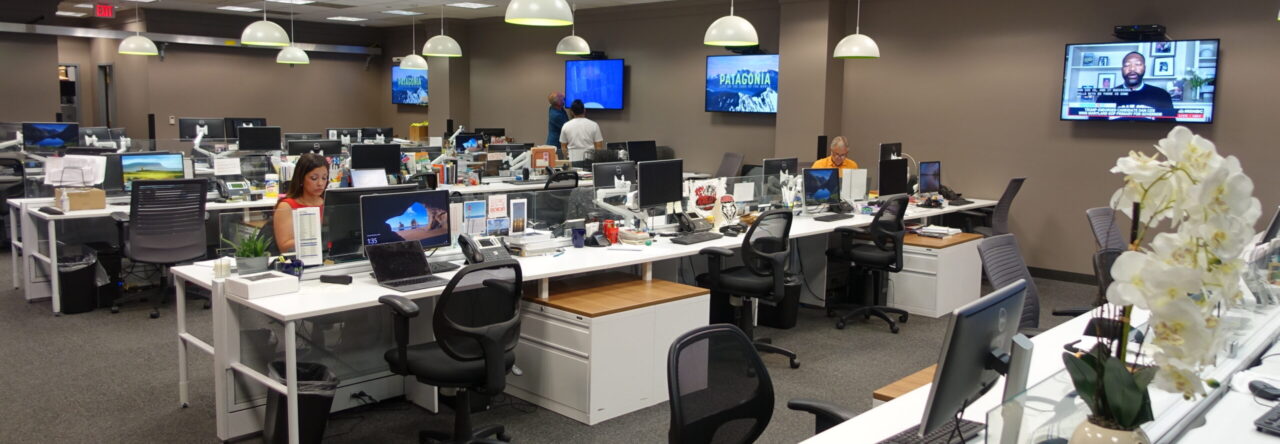For a long time I’ve heard an alternative explanation for why newspaper advertising collapsed over the past 15 years. The argument goes something like this: Yes, Craigslist, Google and Facebook offered a better deal and took most of the ads that used to belong to newspapers. But newspapers themselves were to blame, too. Ad salespeople had become so accustomed to sitting at their desks and taking the orders that came pouring in that they actually had no experience or incentive to get out and sell. The tech platforms were going to have a devastating effect on them in any case, but it was worse than it needed to be, so this argument goes, because they couldn’t shake themselves out of the lethargy that came with many years of enjoying a monopoly or, at worst, a duopoly.
Which is why there’s some reason to be at least a little bit hopeful about the latest moves by a large media company that is hiring on both the business and editorial sides. At a time when many news organizations are in the midst of laying people off (CNN, The Washington Post, the Los Angeles Times) or shutting down (The Messenger), one media mega-corporation that is a household name is taking the opposite approach.
Would you believe it if I told you that the company is Gannett? The chain, which controls about 200 daily papers, anchored by USA Today, is rightly known for hollowing out newsrooms and using the savings to pay down debt and enrich their owners and top executives. These days, though, they are talking about trying something different.
Recently Mike Blinder of Editor & Publisher had two top Gannett executives on his podcast, “E&P Reports” — the chief content officer, Kristin Roberts, and Jason Taylor, the chief sales officer. After years of cutting at Gannett and the chain that it merged with several years ago, GateHouse Media, Gannett is now in expansion mode. Taylor said that Gannett has hired about two dozen local general managers since last August, with plans to hire more. These are the folks who are in charge of selling advertising, and they say it’s paying off with new accounts and with the return of some old accounts that left years ago.
Meanwhile, Roberts said that Gannett has hired 500 journalists since June of last year, with more to come in the months ahead. These are reporters, editors and visual journalists who, she said, will “bring strength back to local newsrooms, so that they can do the job of strengthening their local communities.” And yes, she mentioned the reporters that Gannett hired to cover Taylor Swift and Beyoncé, so make of that what you will.
Now, of course we should be skeptical. Axios has reported that the combined company eliminated fully half of its 21,000 employees after the 2019 merger, and the destruction it has wreaked in the communities it supposedly serves has been deep. I would love to hear from Media Nation readers whether they’ve seen any improvement in their Gannett paper’s coverage of local news in recent months.
The situation is especially dire in Eastern Massachusetts, where Gannett has closed and merged dozens of weekly papers and replaced local news stories with regional content from around the chain. Weeklies were at the heart of GateHouse, but the new Gannett doesn’t seem to have any interest in weeklies. If improvement is going to come, I suspect, it’s going to be at the dailies.
It’s also fair to be skeptical about whether the current upsurge is sustainable. Roberts and Taylor were recruited at a moment when the executives at the very top of Gannett decided to see if a little expansion might bring in more money than round after round of cuts. If it works, great. If it doesn’t, well, we know that the cutting will resume. Gannett remains heavily burdened by the debt it took on when it merged with GateHouse, which led the new Gannett to cut half its workforce.
The hiring that’s taking place now doesn’t come close to making up for what has been lost. But if they succeed, perhaps the hiring will continue.
• Blinder has been on a roll with his podcast. His latest features Steven Waldman, the president of Rebuild Local News, and Jeff Jarvis, a journalist, author and the retiring director of the Tow-Knight Center for Entrepreneurial Journalism at City University of New York. The discussion was billed as debate over whether legacy media is worth saving or if instead it’s time to let them go. They agreed more than I thought they would, though they diverged when the discussion turned to government assistance and efforts to force Google and Facebook to compensate news organizations. It’s well worth a listen.




